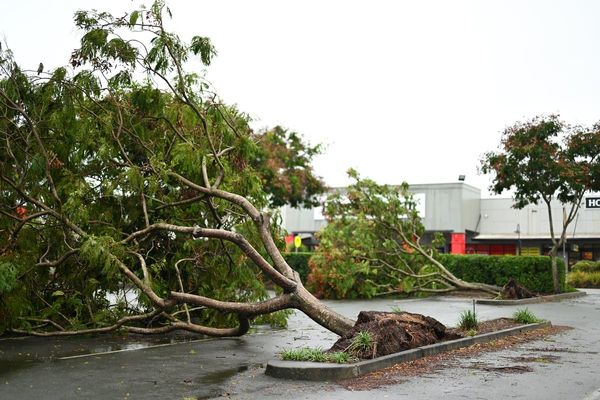
When is the 2025 Australian election?
Australia’s next federal election will take place on Saturday 3 May.
Parliament was dissolved on Friday 28 March, leaving the government in caretaker mode.
How do I enrol to vote, or check if I am registered to vote?
Voting is compulsory.
To vote, you must be registered on the electoral roll. Check if you are enrolled to vote here. Rolls have now closed.
Which electorate am I in?
You can find your electorate by entering your address on this page on the website of the Australian Election Commission (AEC). The results of the 2022 election in each electorate are on the commission’s Tally Room site, but bear in mind that boundaries of many seats have since been changed, primarily in NSW, Victoria and WA. You can read about what those changes mean on the election blog of the ABC’s Antony Green.
Voting on election day
At the ballot box, you will be handed two pieces of paper. The smaller is for the House of Representatives, which is elected using preferential voting. You must number every box in order of your preference for your vote to be valid. The larger is for the Senate, which consists of 76 members, 12 for each state, and two for each territory – as with most federal polls, only half are up for election or re-election (except in the territories, where all senators face the voters again). On the Senate ballot paper, you can vote in one of two ways. First, you can number at least six boxes above the line, indicating the parties or groups you prefer in the order of your choice. Or you can vote below the line, meaning you are voting individually for the candidates nominated by each party or group. In this case you must number at least 12 boxes to cast a valid vote. More information is available on the AEC website for the House of Representatives and the Senate.
What if I am unable to vote on election day?
If you are unable to vote in person on election day you can apply for a postal vote, or vote at a pre-poll booth.
Postal voting applications must be submitted by 6pm on Wednesday 30 April. Votes must be completed on or before election day, and postal votes must be received by the AEC no more than 13 days after polling day to be valid.
Early voting centres are open from Tuesday 22 April until Friday 2 May. You can find locations in your electorate on the AEC website. Not all early voting centres are open for the entire two-week early voting period, so check opening hours before going to vote. Some do not open until Monday 28 April, and some are closed on Saturday 26 April, the AEC advises. All centres will be closed on Anzac Day, Friday 25 April.
Remote voting also begins on Tuesday 22 April. Locations and times for visits by the AEC’s mobile teams can be found on the commission’s website.
Information on how to vote if you will be overseas on election day is available at the AEC website.
How many seats does each party hold?
In the outgoing parliament Labor held 78 of 151 seats in the House of Representatives, giving it an overall majority. The Coalition held 54 seats, the Greens four and independents 13, with one each for the Centre Alliance party and Katter’s Australia party.
At the 2025 election the lower house returns to 150 members, with Western Australia gaining one seat and New South Wales and Victoria each losing one, therefore 76 is the target for majority government.
Labor held one of the abolished seats (Higgins), while North Sydney was held by the independent Kylea Tink. The new WA seat, Bullwinkel, is notionally a Labor marginal. Many other seats have changed boundaries – see the AEC’s estimate of the new notional margins, which differ in a few cases from those calculated by the ABC’s Antony Green.
No party has a majority in the 76-seat Senate. The Coalition holds 30 seats, Labor 25 and the Greens 11, with the remaining 10 seats held by independents and minor parties. These are the senators up for re-election in 2025.
What happens if no party wins a lower house majority?
If neither of the two main parties wins a majority of seats, they will need to rely on minor parties and/or independents for confidence and supply. This may mean extended negotiations take place after polling day until we know who will be able to form government.
The last election that led to a minority government was in 2010, when Labor eventually secured the support of independents enabling Julia Gillard to remain as prime minister.
What do the polls say?
Guardian Australia’s poll tracker, which takes account of all published polls, shows the Coalition held a steady lead on a two-party-preferred basis at the start of the year, but Labor has since narrowed the gap and then overhauled it. Most analysis of the polls still suggests a hung parliament is the most likely outcome, with Labor in the box seat to be able to form minority government at least. Results are never uniform across the country and national poll figures do not necessarily allow for an accurate prediction of how many seats any party may win.







